
Professionals working in plastic pharmaceutical packaging are aware of the intricate nature of this field, which demands expertise and careful consideration of multiple factors. This is particularly the case when designing packaging for costly and complex pharmaceutical products with chemical sensitivities, such as susceptibility to moisture or gas and the possibility of interaction with the packaging material. Furthermore, when the packaging’s structure is vital to ensure the ease and convenience of use of the final product, there is added complexity, and the comfort of end-users, medical staff, and physicians must be taken into account.
Sevo Flurane, a liquid anesthesia in surgeries, is such a material. This medical chemical liquid is intended for the induction and maintenance of general anesthesia in adults and children during surgery. It is favored by doctors because it does not cause cardiovascular problems and is easier to recover from. The material arrives in the operating room as a liquid in a bottle that needs to be poured into a specialized vaporizer device. From the vaporizer device, the material (which has been converted from a liquid to a gas state) is transferred through a mask to the patient’s respiratory tract. Due to its highly volatile nature, efficient passage of the material to the vaporizer device must be ensured while avoiding the spreading of the material into the air. Such exposure wastes expensive material and poses a danger to operating room personnel who are exposed to the material’s vapors for many hours each day.
The additional complexity of the packaging arises from a regulatory requirement that mandates compliance with international standards that require a fixed symbol on the anesthesia material so that each material is marked with a different color. The marking is done by adding a security ring to the bottle cap. In the case of Sevo Flurane, the bottle should be marked with a yellow ring. If an adapter is used for pouring the material into the vaporizer, it should also have the same color marking. The marking of medical materials and the use of such anesthesia materials are defined by an international standard ISO 5360:2016.
Limitations of glass packaging for sevo Flurane
Sevo Flurane is typically packed in a basic glass bottle with a screw cap, but this packaging falls short of being optimal. Firstly, glass bottles are prone to breaking if dropped, causing a rapid and potentially dangerous release of the substance, which is particularly worrisome during surgical procedures. Additionally, cleaning up a spill requires quick action and can be a distraction from the primary task at hand for medical staff. Secondly, glass is a heavy material, weighing four times as much as comparable plastic packaging. This added weight, combined with the glass’s fragility, increases both the complexity and cost of logistics. Medical materials such as sevo Flurane, which are expensive, are often transported by air, making the logistics costs even more exorbitant.
Unique packaging project and transformation to plastic packaging
Gilpack has led a complex and exciting project in recent years, introducing a new line of plastic packaging for Sevo Flurane. The project originated from a request by a European customer who recognized the benefits of plastic packaging and collaborated with us to create a unique bottle and pouring cap.
To accomplish this, we invested significant effort in researching the field and conducted the entire project, working closely with various entities worldwide. This included collaborating with a regulator in the customer’s destination country, consulting with an international firm on regulatory issues, and coordinating with raw material manufacturers in Europe, the United States, and Japan.
The packaging development involved several trials to identify the ideal raw materials for the bottle and create a unique pouring cap that would prevent the material from evaporating during surgery. The successful completion of this development process and the start of product marketing enabled our customer to achieve over 50% of the market share in their operating country, with consistent production in large volumes in Gil Pack’s factory.
The glass has been replaced with a polymer with improved properties.
After numerous attempts, the material chosen for the production of plastic pharmaceutical bottles is PolyEthylene Naphthalate (PEN). This polymer is known to have a high barrier to gases and moisture, 30 times more than PET, and is also recyclable. In addition to its functional advantages, processing the material is complex, both in terms of preparing the material before the injection and blow molding processes and in terms of injection and mold release conditions. Moreover, PEN requires specialized injection and blow molding equipment, and the mold design must take into account its unique characteristics.
PEN is a costly polymer, particularly in the pharmaceutical sector, and inexperienced handling can lead to excessive waste and expenses that are ultimately passed on to the consumer. However, through efficient production techniques, we have successfully minimized waste and can offer reasonable pricing to our customers we can provide custom blow molding bottles that are tailored to the unique requirements of each product.
Unique cap that solves the problem of evaporation and allows for reuse
A unique solution for packaging Sevo Flurane can be found not only in the bottle design but also in the cap design. Today, there are two main types of caps used around the world:
• The first is a simple screw cap that needs to be removed from the bottle mouth every time sevo Flurane is filled into the vaporizer. This simple solution causes significant evaporation during the pouring process into the vaporizer.
• The second solution, which is less common, includes a spring-loaded dispensing mechanism that allows the flow of the anesthetic fluid only when the bottle is connected to the vaporizer. Although this solution provides an answer to the high volatility problem of the material, it is single-use only, cannot be transferred from the bottle, and cannot be recycled due to the combination of different polymers in it.
Gil Pack developed a unique cap that provides a solution to the drawbacks presented above. Firstly, it has excellent double sealing that prevents material vaporization. Additionally, it is reusable by transferring between different sevo Flurane bottles. The cap has a tamper-evident mechanism – mandatory in such products. Additionally, it contains a marking ring (according to ISO 5360:2016) that remains permanently on the bottleneck even when transferred to other bottles. In this way, end-users can reuse the cap and thereby save on the purchase of additional accessories and reduce the amount of disposable waste generated for medical uses.
Full warranty for the entire packaging in one place
The experience we gained in this project has positioned us as a leading manufacturer of pharma plastic bottles, specializing particularly in liquid sedation packaging: sevo Flurane, isoflurane, and desflurane. We can offer fast production and delivery times and serve as a packaging supplier that can provide a one-stop-shop for all the customer’s needs. These include project management, coordination with secondary suppliers, raw material manufacturers, regulatory coordination, and, of course, advanced production methods for both cap and bottle – all in one place. With this type of work format, we provide packaging with full compatibility between the cap and bottle, along with a full warranty. This way, you can be confident that your valuable and sensitive product is optimally packaged.
If you are engaged in the production of sedative materials such as sevo Flurane, isoflurane, desflurane, etc., we would be happy to assist you in developing bottles and caps suitable for your needs.

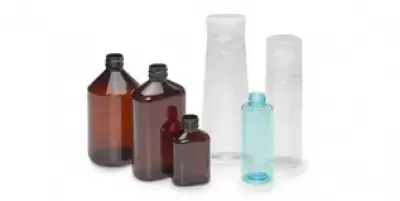 PET Bottles for Cosmetics
PET Bottles for Cosmetics Medical Syrup Bottles
Medical Syrup Bottles Spill Proof Bottles for Oil
Spill Proof Bottles for Oil Bottles for pharma liquids
Bottles for pharma liquids Square HDPE Bottles
Square HDPE Bottles Powder Bottles
Powder Bottles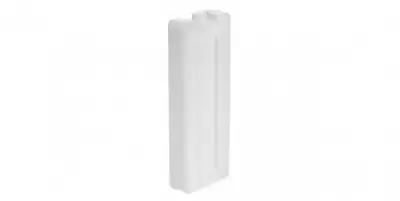 Ice Pack (Cooling Element)
Ice Pack (Cooling Element) Rectangular Bottles
Rectangular Bottles Water Sampling Bottles
Water Sampling Bottles PE Bottles for Cosmetics
PE Bottles for Cosmetics Drosophila Bottle
Drosophila Bottle Plastic Jerry cans and carboys
Plastic Jerry cans and carboys PEN BOTTLES & ADAPTORS FOR SEVOFLURAN
PEN BOTTLES & ADAPTORS FOR SEVOFLURAN Food Supplement Jars
Food Supplement Jars Cylindrical Jars with Hinged Lid
Cylindrical Jars with Hinged Lid Cylindrical Jars with Screw Caps
Cylindrical Jars with Screw Caps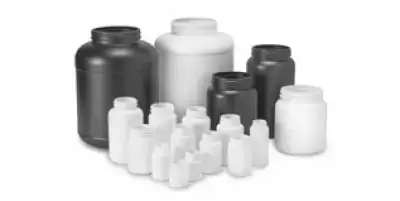 Wide Mouth Plastic Jars
Wide Mouth Plastic Jars PET Pill Jars
PET Pill Jars HDPE Packers with Hinged Lid
HDPE Packers with Hinged Lid Child Resistant Closures (CRC)
Child Resistant Closures (CRC)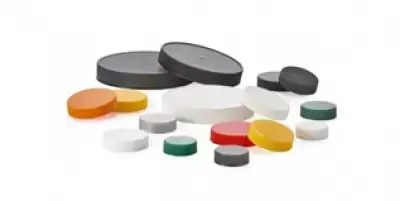 CT Plastic Screw Caps
CT Plastic Screw Caps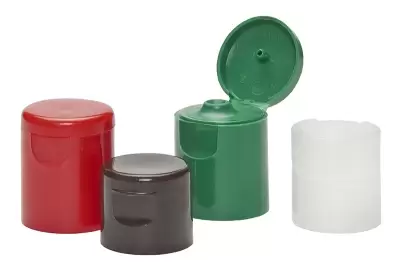 Disc Top and Flip Top Closures
Disc Top and Flip Top Closures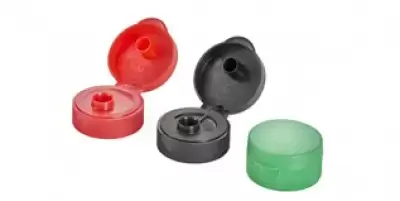 Flip Top Closures
Flip Top Closures Over cap for Cosmetic Bottles
Over cap for Cosmetic Bottles Powder Dispensing Cap
Powder Dispensing Cap Cap for Water Sampling Bottles
Cap for Water Sampling Bottles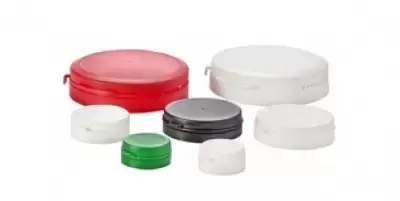 Tamper Evident Hinged Caps
Tamper Evident Hinged Caps Hinged Caps with Liner
Hinged Caps with Liner Tamper Evident Screw Cap, 38mm
Tamper Evident Screw Cap, 38mm Pharma Glass Bottles & Jars
Pharma Glass Bottles & Jars Pharma Lotion Pumps
Pharma Lotion Pumps Measuring Cups & Spoons
Measuring Cups & Spoons Pharmaceutical Sprayer Pumps
Pharmaceutical Sprayer Pumps Cap Liners
Cap Liners Syringes
Syringes Liners
Liners





